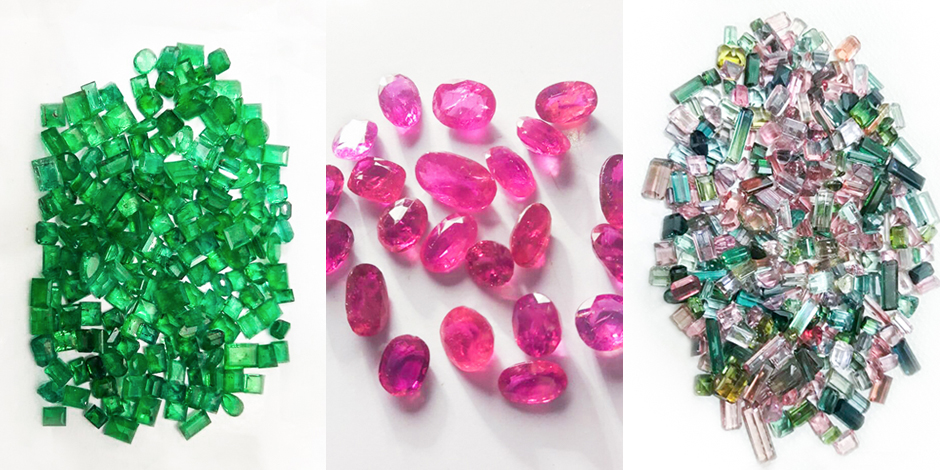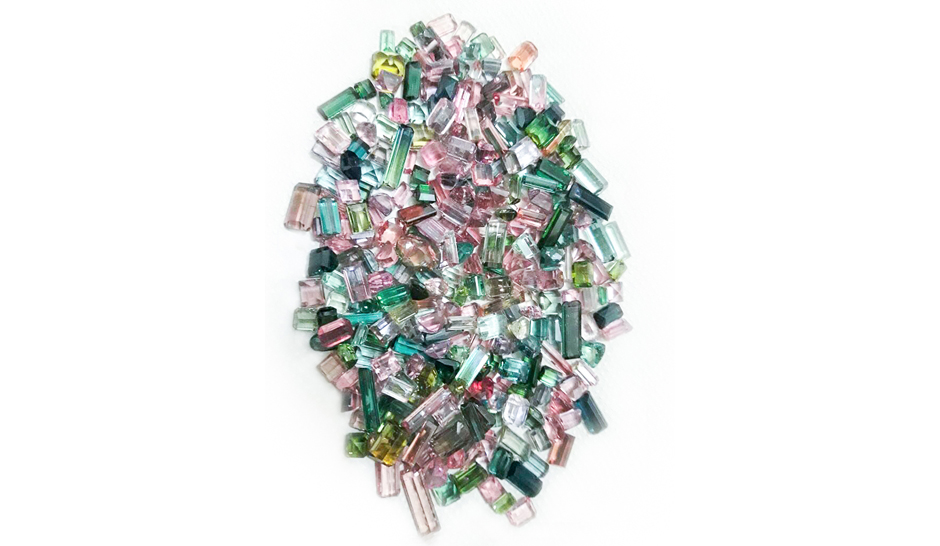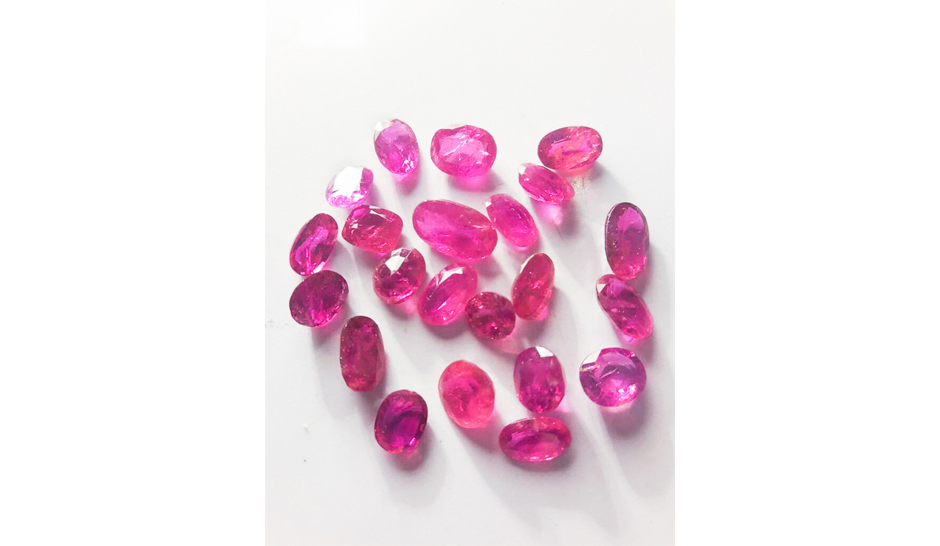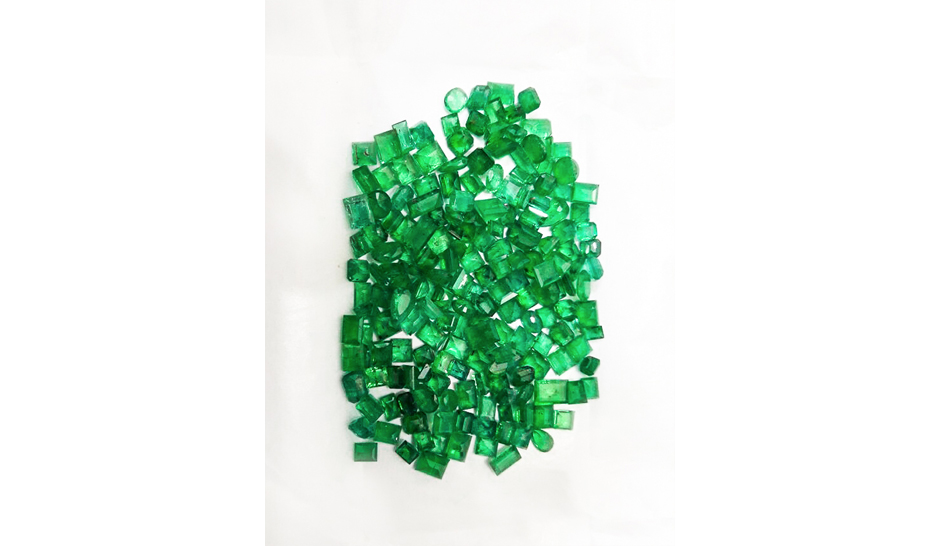
After a wave of kidnapping for ransom terrorised the city in 2008, many traders left for other pastures. Additionally, the government’s apathy towards developing the sector, and the mismanagement of funds within formal bodies, have not helped matters.

Gemstone businesses were established in the 1980s by Afghan refugees in Peshawar. Prior to the Soviet-Afghan War (1979-1989), the Afghan government had banned the mining of gems due to the use of unregularised equipment: dynamite, for example, would destroy a large portion of semi-precious in the excavation process.

After the war, the lack of government control in several parts of Afghanistan, easy access to dynamite, and general lawlessness allowed miners to start their own businesses.
The stones mined in Afghanistan would then be transported to Peshawar. It was around this time that the Namak Mandi gemstone market was established – and continues to exist. The increase in demand for gems resulted in mining in various parts of Khyber Pakhtunkhwa and the Federally Administered Tribal Areas.
In the past, semi-precious stones such as lapis were so valuable and rare that they were deemed fit for kings. “There was a time when the royal family of Afghanistan was the only source of supply for lapis and other semi-precious stones,” says Shahzad, a local trader at Namak Mandi. “The king of Afghanistan even gifted rare stones to decorate the tombstone of Allama Iqbal.”

Experts say Pakistan’s gemstone industry has huge potential
Lapis was found in Afghanistan’s Badakhshan province in large quantities and was transported to Peshawar for export. Other gemstones such as tourmaline, peridot, emerald, topaz, ruby, and apatite are found in different parts of Pakistan and Afghanistan.
However, over time, the value and worth of these gems have decreased significantly. Lapis stones are available in Peshawar for as low as Rs700 per kilogram and as high as Rs10,000 per kilogram. These days, lapis is mostly used for decoration and tiles instead of jewellery.
Mardan’s Katlang is known for its pink topaz, but this stone changes its colour and has little value in the market. On the outskirts of Peshawar, near Warsak, miners are now scavenging for other gemstones and minerals, such as bastnasite.

Experts say Pakistan’s gemstone industry has great potential but is unable to tap into it, due to the lack of resources and skilled expertise: the country lacks modern mining techniques and training in cutting and polishing. Most of the gemstones are purchased in their raw form, fetching far lower prices than cut and polished pieces.

“Swat is known for its high-quality emerald, but its size is very small; it can be only used in Swiss watches. Indian buyers come here to purchase our emeralds, cut and polish it, and then sell it to luxury watchmakers around the world,” Shahzad explains.
“These watches fetch thousands of dollars in the international market, but in Peshawar, emerald stones are available for just 3,000 rupees per carat. We lack the polishing, cutting and faceting skills that India has. Jaipur, Rajasthan, is still considered the hub of the gemstone industry.”

Shahzad goes on to add that millions have been provided jobs in the gemstone sector in India, “despite the fact that their supply is scarce, after centuries of large-scale mining to meet the demand of the royal families.”
Shahzad believes the biggest setback for the gemstone businesses is the fact that much of the mining is done illegally, without government permits, and without formal surveillance of the land. Additionally, the gemstone businesses’ dependency on Afghanistan – as many of the stones are smuggled in from Taliban-controlled areas – translates into an atmosphere of uncertainty for the businessmen at Namak Mandi. Their supply – and source of livelihood – remains inconstant.
In 2002, the Gems and Gemological Institute of Pakistan (GGIP) was established with the aim to support the gemstone industry as a joint venture between the government and private sector. However, according to Shahzad, it has failed to do what it set out to.
The Gems and Mineral Show of Pakistan was initiated in 1994 to attract foreign buyers, but it went on a seven-year hiatus when the militancy was at its peak in K-P and only restarted in 2015, with the venue shifted from Peshawar to Islamabad.
“For two years the show was held in Islamabad in 2015 and 2016 and we were very encouraged by the good feedback,” said Dost Muhammad, the founding president of All Pakistan Commercial Exporters Association (APCEA). He added that the show was held in Peshawar again in 2017, after a gap of nine years.
“Our problem is that we are dependent on the foreign buyers and if they do not come to Peshawar, we get no business,” he added. “There is great potential but there is no government support for the sector."
Photos provided by Dost Muhammad, a gemstone trader in Peshawar


















1713973361-4/Destryed-Gaza-Historical-Sites-(1)1713973361-4-270x192.webp)















1713853507-0/MalalaHilary-(2)1713853507-0-270x192.webp)







COMMENTS
Comments are moderated and generally will be posted if they are on-topic and not abusive.
For more information, please see our Comments FAQ